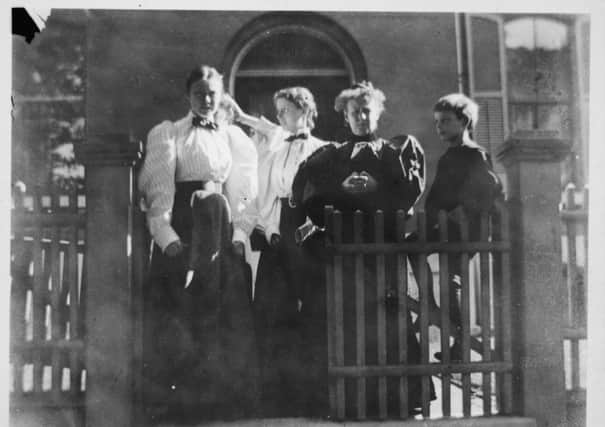Book reviews: Young Eliot by Robert Crawford


YOUNG ELIOT: FROM ST LOUIS TO ‘THE WASTE LAND’
ROBERT CRAWFORD
Jonathan Cape, 512 pp, £20
Meticulously researched without being aridly academic, psychologically astute without being reductively diagnostic and written with a poet’s ear for the peculiar timbre and innovation of T S Eliot’s epoch-making poetry, Robert Crawford’s magisterial first volume of the poet’s life enjoys significant benefits unafforded to his predecessors. Not only are five volumes of Eliot’s correspondence now published, but we also have the uncollected poems assembled as Inventions Of The March Hare, as well as a great deal of often local archival discoveries.
This is not an “authorised” biography, but the estate has clearly been less intractable than they were to either Lyndall Gordon or Peter Ackroyd. There is more to come. Eliot’s correspondence, some “1131 letters and related enclosures” to Emily Hale, the American woman who rebuffed him before he went to England and met Vivien Haigh-Wood, are under seal at Princeton, to be made public in 2020. I would hazard, however, that though they may provide insight and even illumination, they will not provide either answers or solutions. Crawford seems wryly aware that the more we know about Eliot, the more perpetually perplexing as a poet and man he becomes.
Advertisement
Hide AdThe title is judiciously chosen, since the idea of a “young” Eliot rather than a “not yet old” Eliot runs counter to one’s normal assumptions. Crawford’s first volume covers the period 1888 to 1922, when Eliot published The Waste Land at the age of 34. In his poetry, he was already fashioning the prematurely aged persona: the speaker of “Gerontion”, for one example, is “an old man in a dry month” and laments he has lost “sight, smell, hearing, taste and touch”. Placing these against an Eliot who took dancing lessons, acted in amateur dramatics, and who took joy in sailing is intriguing. Although Crawford gives due credit to Eliot’s intellectual gifts (and the list of the courses he took at Harvard is formidable), he also shows how on first attending, Eliot seemed more keen on Coca-Colas and “loafing”, to the extent a letter was sent to his father politely suggesting he “raise his record to a satisfactory level”. The owlishly cerebral persona evolved out of previous attempts to define himself.
There is something almost pitiable about Eliot playing the slacker and writing the bawdy and scatological verses about Columbo and “King Bolo and his big black queen” for his undergraduate friends in the Fox Club. These poems, which were finally printed in Inventions of the March Hare in 1996, are not so much juvenilia as juvenile. But when we factor in Eliot’s shyness, which bordered on the aloof and was brought about by having to wear a truss for his childhood hernia as well as a strange preoccupation with the size of his ears, this attempt to fit in with a set that was smart rather than sophisticated makes more sense.
There are two major questions for a biographer in this period – Eliot’s conversion to Anglicanism will come in the second volume. The first is the problem with anti-Semitism in Eliot’s work. Crawford shows how unthinkingly anti-Semitic Eliot’s family could be, but even though some of their son’s verses might make one wince, but compared to Pound, Celine, or Wyndham Lewis, Eliot’s offences seem venal not cardinal or mortal sins.
The second is the relationship with his first wife, memorably sentimentalised in the film Tom & Viv. Setting aside the possible affair with Bertrand Russell, her treatment of him was shabby. His early successes as a poet were used as a goad to her former beaux; and she made sure he knew she was in touch with them. How Crawford deals with the eventual breakdown of the relationship must remain for the next volume.
The only criticism I would make is more one of the form of all such biographies. All such books display what I call the apophenia of the incidental, whereby everything in the life, no matter how small, must in some way come into the work. Crawford almost admits this when he writes “even the most recondite details of his graduate learning bore fruit in later poetry”. Two examples: in 1896 a cyclone hit St Louis, with dramatic thunderstorms. Has this any bearing on the fifth part of The Waste Land being called “What The Thunder Said”? If so, must there have been a similarly tempestuous moment in the life of the young James Joyce, since he punctuates Finnegans Wake with ten hundred-letter thunder words? Secondly, Crawford links Eliot’s class ode, which has the lines “What we owe for the future, the present, and past / Fair Harvard, to thine and to thee”, to the opening of the first of The Four Quartets, “Time past and time present / Are both perhaps present in time future”. Given the former is ra-ra jingoism and the latter philosophical speculation, I fail to see the link beyond a coincidence of language.
That said, this is an exemplary book. Crawford is a nimble in his readings of the work as he is sensitive (though not exculpatory) in his judgements of the man. I look forward to the second volume eagerly.